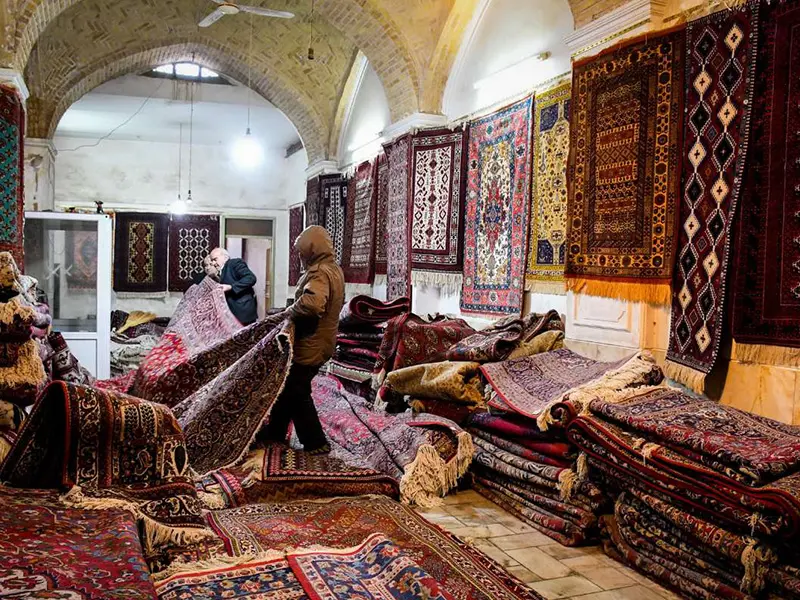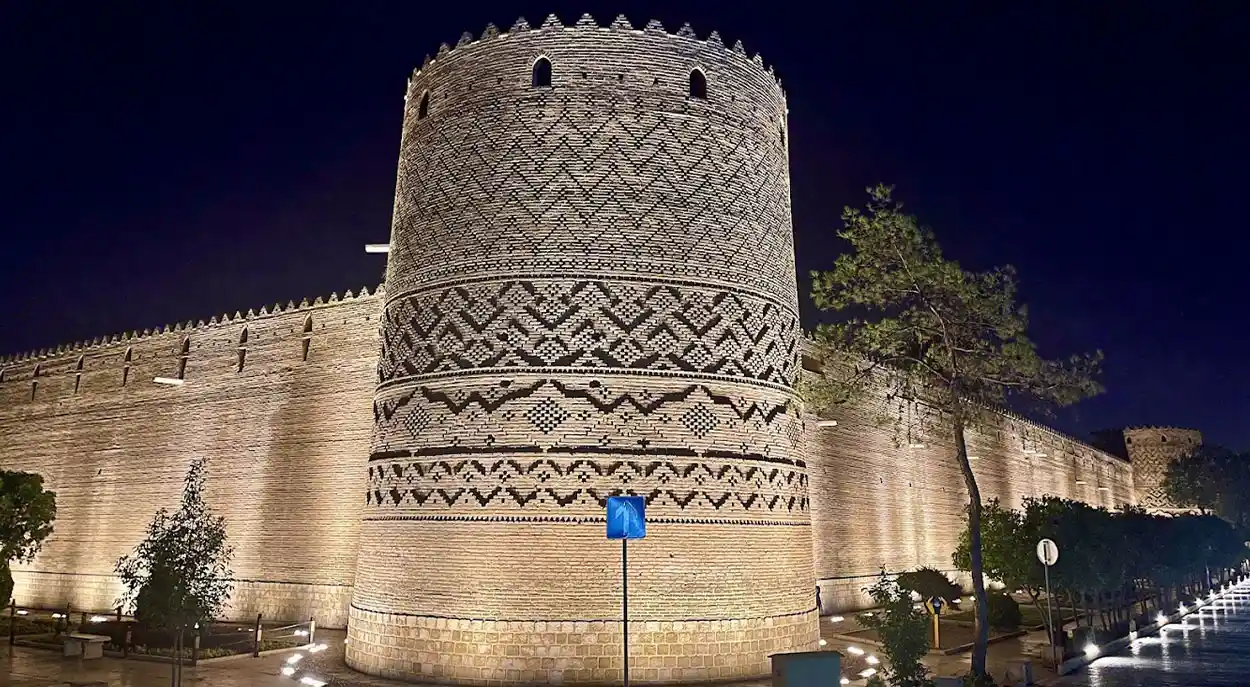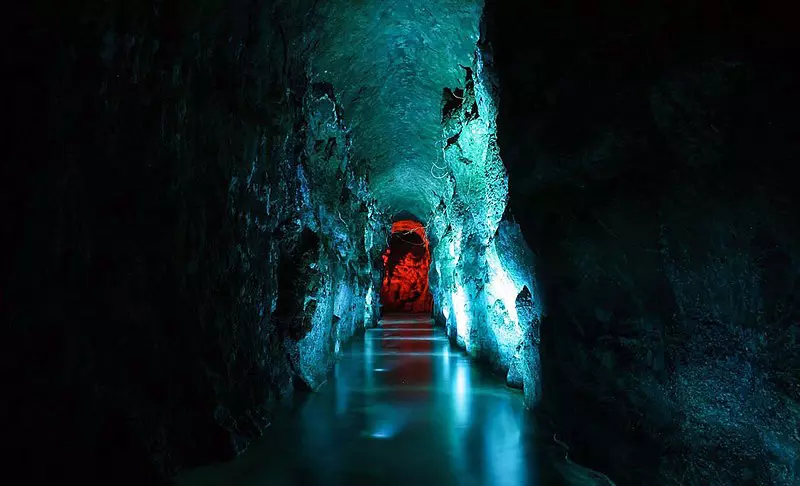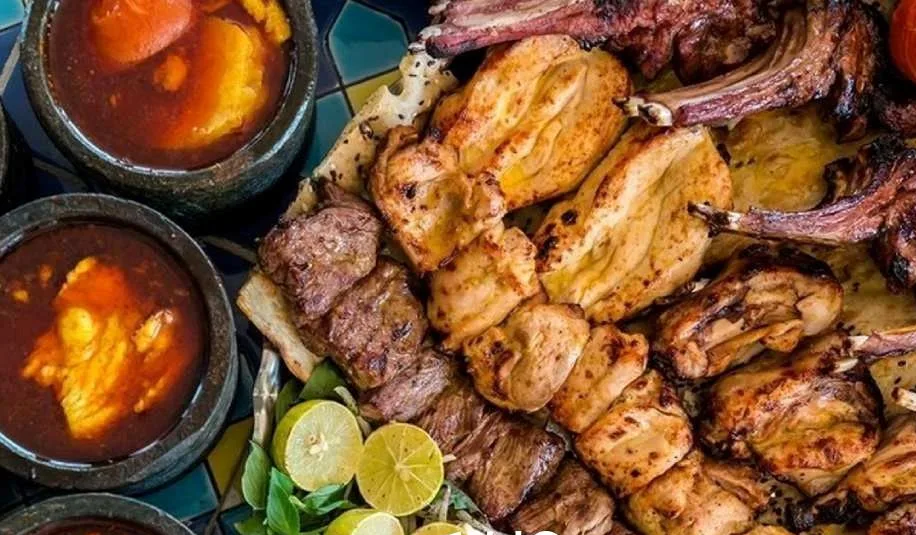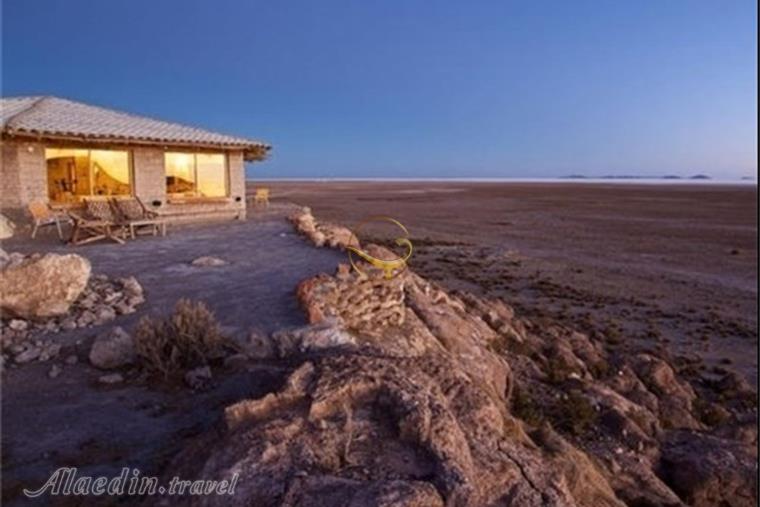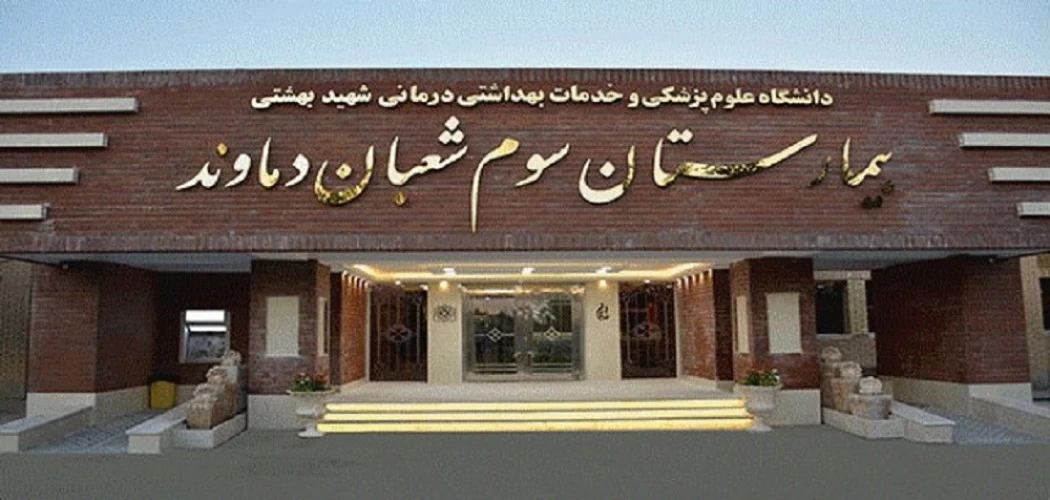Isfahan rug : Isfahan Iran
It’s not without reason that Isfahan is always referred to as the city of masters. In the heart of its old neighborhoods, wherever you step, you’ll witness signs of mastery and artistry so abundant that you might think you’re walking into the heart of Isfahan or a painting. Isfahan carpets, crafted by great masters during the Safavid era, reached their peak, making them the epitome of urban carpets.
History of Isfahan Carpets:
The glory of Isfahan city dates back to the Safavid era, particularly during the reign of Shah Abbas the Great. Besides fostering carpet workshops, Shah Abbas facilitated the export of carpets to Europe.
Dr. Taqi Behrami has documented Isfahan carpet weaving during two periods: the golden age of Safavid carpet weaving and the Qajar period, specifically during the reign of Zill al-Sultan, Naser al-Din Shah’s son.
He emphasized the extraordinary importance of Isfahan carpet weaving during the Safavid era, especially silk carpet markets flourishing, where locals dedicated themselves to weaving exquisite carpets, leaving behind precious works of art. Today, most of Iran’s expensive carpets seen in museums in London, Paris, and other parts of Europe and America are Isfahan carpets.
Following the decline of the Safavid dynasty, this industry, along with others, gradually lost its significance and almost faded into obscurity in the past hundred years. Carpet weaving was nearly forgotten to the extent that by the end of Naser al-Din Shah Qajar’s reign, there was no carpet factory in Isfahan whatsoever until Zill al-Sultan, the ruler of Isfahan, married a woman from Kurdistan who knew carpet weaving. Recognizing the value of carpets, he procured several carpet looms, marking a new beginning for the resurgence of carpet weaving.
Isfahan Carpet Characteristics:
The dimensions of Isfahan carpets typically range from one and a half to two yards, up to a maximum of 6 to 9 square meters. The use of asymmetrical knots, short pile height, and the utilization of wool and silk for the pile are prominent features of Isfahan carpets today. In Isfahan, knotting is done by hand without the use of a hook on the somewhat loose warps, which are not under intense tension like Turkish warps.
Additionally, two wefts (thick and thin) made of cotton are used, inclined towards a level woven structure. Asymmetric warp and weft are used, and vertical (fixed) threads are employed.
With a knot density of 50 to 90 (per 6.5 centimeters), it provides a background for creating intricate and delicate designs. Instead of knot density, the term “Sad Tahi” is used in Isfahan. For example, it might be said that this one and a half yard is equivalent to how many “Sad Tahi.” Essentially, it indicates the knot density. If this one and a half yards equals 10 Sad Tahis, the knot density is 65. The criteria for buying, selling, and wages are based on the number of 100 Tahis intended at the warping stage, and usually, with a colored line, the warps are separated. Additionally, the Shirazi joint and carpet payment are made during weaving.

Isfahan’s fine and silk floral carpets, with their extraordinary beautiful designs, have always enjoyed immense popularity in global markets. Isfahan is one of the few centers of carpet weaving in Iran where circular carpets are also produced.
The carpet weaving areas in Isfahan province include Natanz, Zavareh, Mezlaghan, Ardestan, Toudeshk, Nayin, Kashan, Mīmeh, Jowshaqan, Shahreza (Qomshe), Najafabad, and Isfahan, each with its own distinct style, which will be addressed separately.
Design and Color in Isfahan Carpets:
In the past and even today, Isfahan designers have been greatly influenced by the patterns of the historical tile works of this city, such as the Forty Columns Palace, the Chahar Bagh School, Sheikh Lotfollah Mosque, and others, adorning their designs with beautiful motifs inspired by these structures. The most noticeable designs in Isfahan carpets include Shah Abbasi, Lachak and Toranj (stylized cypress tree and citrus motif), Animal motifs, Eslimi (Arabesque), Shah Abbasi Pouring Toranj, and portrait and landscape designs.
The main structure of most patterns is the Toranj (Citrus) Lachak. The exquisite Eslimi and Khatai (Chinese) motifs, along with Eslimi borders and beautiful Shah Abbasi flowers, are delicately incorporated into the carpet’s design. All Isfahan patterns are circular, and there are hardly any broken patterns in them. Designs such as Toranj Lachak, Tree of Life, Mihrab, Vase pattern, Hunting Ground, and even Gol Farang (European flower) along with border frames are among the motifs used in Isfahan carpets.
Designers and Manufacturers of Fine Isfahan Carpets:
Among the famous and renowned designers of Isfahan carpets are Ahmad Archang, Isa Bahaduri, Seyyed Jafar Rashtian, Reza Shakery, Abbas Karbasian, Ahmad Shakrani, Asghar Bayat, and Akbar Mahdiyi. Notable contemporary manufacturers of Isfahan carpets include the Seirafian family and the Safdari-Zadeh Haghighi family. Yadal Allah Safdari-Zadeh Haghighi, along with Sadegh Seirafian and Hassan Dordeshi, along with Akbar Mahdiyi, are among the most well-known manufacturers of fine Isfahan carpets in recent decades.
5 Important Facts About Isfahan Carpets
1- History of Carpets
Isfahan carpets and the craftsmanship of the city’s artists are unparalleled not only in Iran but also globally. Isfahan carpets are renowned as one of the most famous and highest-quality handwoven carpets in Iran. The history of Isfahan carpets dates back to the Safavid era. Since the nobility and kings of the Safavid era had a great interest in carpet weaving, exquisite carpets were woven during that time. Carpet weaving flourished in Isfahan during the Qajar period, and high-quality carpets were woven extensively during this period.
During the Pahlavi era, carpet weaving industry in Isfahan somewhat ceased, but in the 1970s, with considerable efforts, carpet weaving in Isfahan revived. Artists and factory owners in this period wove high-quality and beautiful carpets using new and modern designs. From that time until today, Isfahan carpets have been recognized as one of the highest-quality and most famous products in the world of carpets.
Moreover, the carpet weaving industry in Isfahan has become one of the important and lucrative industries in the region. A very interesting documentary about Isfahan carpets has been produced by the strong content production team of Kriyas Boutique Hotel, which you can enjoy watching through this link.
2- Designs of Isfahan Carpets
The design of Isfahan carpets, in terms of classical style and preservation of authenticity, ranks first in Iran. Isfahan carpets, as one of the most famous and oldest types of handwoven carpets in Iran, have various and beautiful designs. The designs of Isfahan carpets mainly include a collection of shapes, motifs, and artistic combinations woven manually using different colors. Isfahan carpet designs usually consist of patterns of flowers and bushes, animals, birds, and geometric shapes.
Additionally, in some designs, historical and cultural motifs such as the sun, moon, lion, and rooster are also employed. Isfahan carpet designs, due to their beauty and authenticity, are internationally recognized and used in interior decoration, hotels, and mosques. Furthermore, these carpets are known as one of the main exports of Iran’s handwoven carpet industry to other countries.
Isfahan carpet designs vary based on the type of weaving, such as Kilim weaving, tile weaving, and carpet weaving. Additionally, Isfahan carpet designs are produced in various sizes, including large and small carpets, prayer rugs, and ruglets. Overall, Isfahan carpet designs continue to be recognized as one of Iran’s cultural and artistic treasures, remaining one of the most popular handwoven carpets in the world.
3- Dimensions and Colors of Isfahan Carpets
Isfahan carpets are produced in various dimensions and colors. The dimensions of these carpets usually range from 2 to 4 meters in length and 1 to 2 meters in width. The color of Isfahan carpets generally varies for each type of carpet, but in general, different colors such as brown, red, yellow, green, and blue are used in their designs. Additionally, golden and silver colors are also seen in some Isfahan carpets.
4- Price of Handwoven Isfahan Carpets
Due to the high durability of Isfahan carpets and their multi-generational usability, these carpets are recognized as a good investment in the world of decoration. The price of carpets in Isfahan varies depending on their quality, size, and design. High-quality and special design carpets usually have higher prices than ordinary carpets. The price in some Isfahan carpet shops is higher due to the special designs of their carpets. In general, the reasonable price compared to its high quality has made these carpets attractive to buyers.
5- Washing Handwoven Carpets
Washing handwoven carpets is a completely specialized task because washing different types of handwoven carpets varies due to the different types of yarn and colors used. It is generally better to be washed manually. To wash handwoven carpets, first, the carpet should be vigorously shaken to completely remove dust and dirt. Then the carpet should be washed with mild water. Under no circumstances should hot water be used for washing, as hot water can fade the colors of the carpet.
Strong detergents should be avoided for washing handwoven carpets as these substances may damage the carpet fibers. Then it’s time for the carpet to be rinsed and dried. Also, if deeper washing is required, it is better to use professional washing services.

Isfahan Carpet: Its Characteristics and Designs
Isfahan carpets hold a distinctive position among handwoven carpets of other cities in Iran. The primary characteristic of Isfahan carpets lies in their reliance on authentic Iranian art and tradition, employing designs such as Islimi motifs, arabesques, and Shah Abbasid floral patterns.
If you observe closely the designs of Isfahan carpets, you can see depictions of the dome of the Lājvardī Mosque, Imam Mosque, Sheikh Lotfollah Mosque, the splendid buildings of Ali Qapu, Chehel Sotoun, and Hasht Behesht. However, nowadays, most of the designs of Isfahan carpets consist of repetitive motifs and arabesques.
The Islimis, independent of the central medallion, with their curved branches and swirling around them, encompass the Shah Abbasid flowers. The distinguishing feature of Isfahan carpets, setting them apart from other authentic Iranian carpets, is the meticulous arrangement of these flowers.
Among the most notable designs used in Isfahan carpets are:
The design of the prayer mat,
The design of the columned mihrab,
And designs featuring trees and hunting scenes.
Isfahan carpets have attracted the attention of global markets and major museums worldwide. Nowadays, Isfahan carpets are predominantly designed and woven in Najafabad, Falavarjan, Shahreza, Golpayegan, Nain, Ardestan, Natanz, Kashan, and Khansar.
Marvelous Colors and Distinctive Features
One of the distinguishing features of Isfahan carpets, setting them apart from carpets and rugs of other regions, is their unique color palette. Isfahan carpets typically incorporate a minimum of 12 colors. In most carpets of this region, cool colors are more prevalent compared to warm tones.
Among the commonly used colors in Isfahan carpet designs are cream, navy blue, light blue, turquoise, diamond, light brown, almond, garlic, olive green, beige-pink, and lacquer. Each of these colors is meticulously employed alongside others, showcasing the mastery of color combination. The color scheme in Isfahan carpets is such that viewers can easily recognize its origin at a glance.
In Isfahan carpets, the border color and the central medallion are often unified or crafted as a cohesive family. The color of the medallion is also chosen to establish a connection between the background and the border. Another notable aspect of Isfahan carpet’s feature is the clear pattern of color harmony, coordination, and uniformity throughout the carpet.
Designs of Isfahan Carpets
Undoubtedly, Isfahan carpets rank among the most authentic Persian carpets, with artisans from Isfahan showing particular zeal in preserving and enhancing their quality. Simultaneously, diversity and innovation in designs and color combinations are prominently observed in Isfahan carpet patterns.
The designs employed in Isfahan carpet patterns are unique and characteristic features of Isfahan carpets. Most of the patterns used in handwoven carpets of this region are floral and leaf designs, woven in large sizes to captivate the eyes of every viewer and evoke admiration.
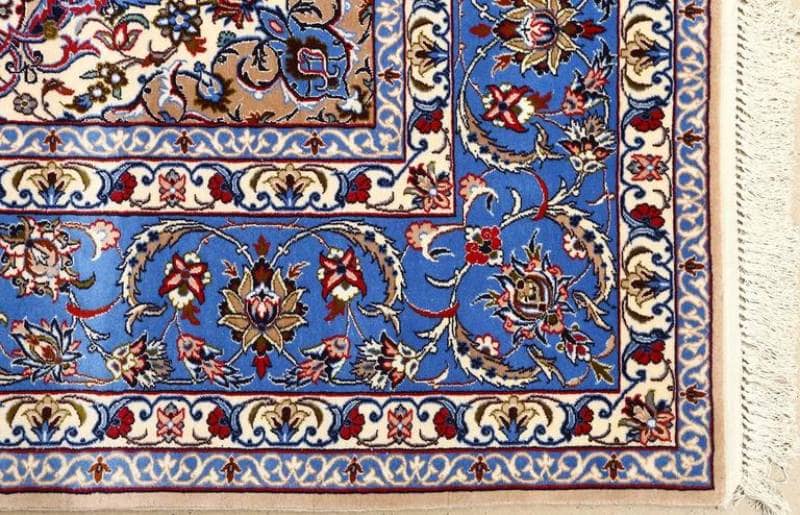
Among the patterns utilized in Isfahan carpet designs, Shah Abbas, Islimi, and trees with animals atop them are prevalent and notably charming. However, various other diverse patterns are woven to the extent that Isfahan carpets can be recognized as one of the authentic Persian carpets, diligently preserved for their originality.
Colors of Isfahan Carpets
The hallmark of Isfahan carpets lies in the perfect balance and coordination among all its colors. Most colors in these carpets range from subdued to vibrant hues. Colors like lacquer and navy blue are extensively used in the borders of Isfahan carpets. In the original text, Isfahan carpet designs make extensive use of yellow, gold, green, and other bright and energizing colors.
The harmony, balance, and variety of colors, especially the vibrant colors in light and dark shades, short pile height, knot counts ranging from fifty to ninety, the use of Persian knots, wool and silk in the warp, weft, and pile, cotton weft, vertical and fixed wefts with Persian weaving, connected Sherazi, double wefting, and the level and finishing during weaving are all characteristics of Isfahan carpets.
Tools Used in Isfahan Carpet Weaving
Isfahan carpets, typically handwoven, are also sheared with a knife. The tools used, such as the scissors and shears, are Persian. The wider the blade of the shears, the shorter it cuts the fibers, resulting in finer carpets. The loom used for Isfahan carpets and its derivatives is of the vertical type. One of the features of this loom is a wooden piece called “Pelleh Pich,” which passes through the lower threads of the warp and is connected to the underside of the loom with metal wires.
Summary
The pattern and design of Isfahan carpets can be considered their most important feature, as they rely on authentic Iranian art and lend a special elegance to this ancient craft with their Islimi, arabesque, and Shah Abbasid floral designs. In this article, we discussed the pattern of Isfahan carpets and their characteristics, delving into their color schemes and mentioning the observance of symmetry in their weaving.

